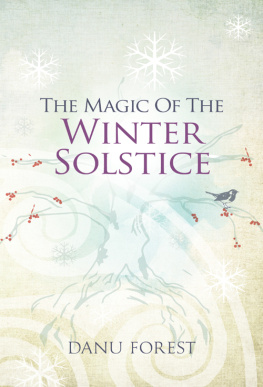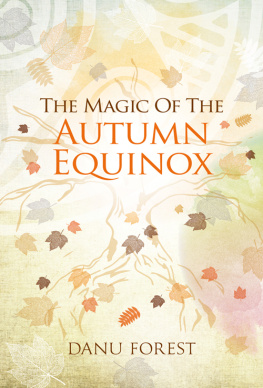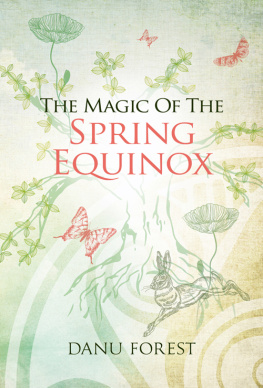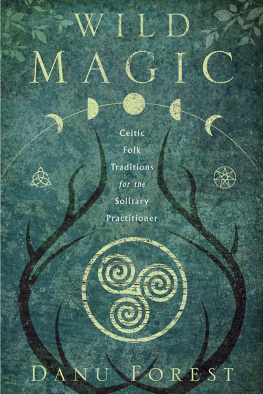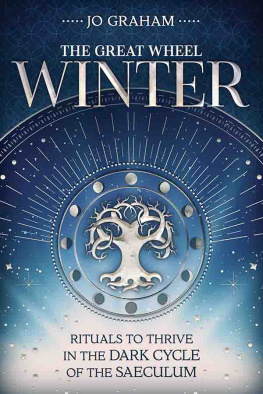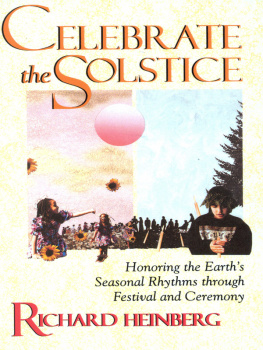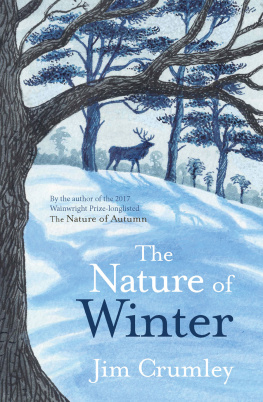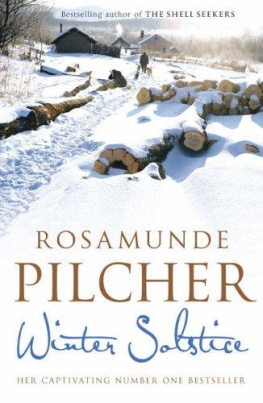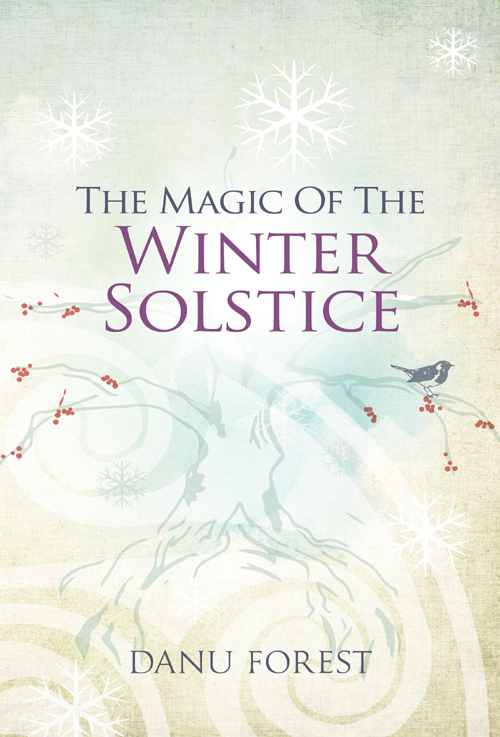In this, the third in a series of e-books on the solstices and equinoxes of the years sacred cycle, Danu Forest reveals the secrets of the Winter Solstice, when the sun appears to stand still and the days are at their shortest. This is a festival of renewal and rebirth; a time for rest, reflecting on the past year and preparing for the new one. Throughout the text, Danu skilfully revives ancient traditions and encourages us to reconnect with nature, and so ourselves, with a host of practical ideas and rituals. Decorate your home with handcrafted orange pomanders and holly wreaths. Meditate on the changing heavens with Celtic starlore. Cast a mistletoe spell for creativity, make mulled wine charm sachets or imbue cider with sugar and spices and enjoy next to a roaring solstice fire. Theres even a guided visualization to allow you to experience directly the magic of rebirth.
The Magic of the
Winter Solstice
Danu Forest
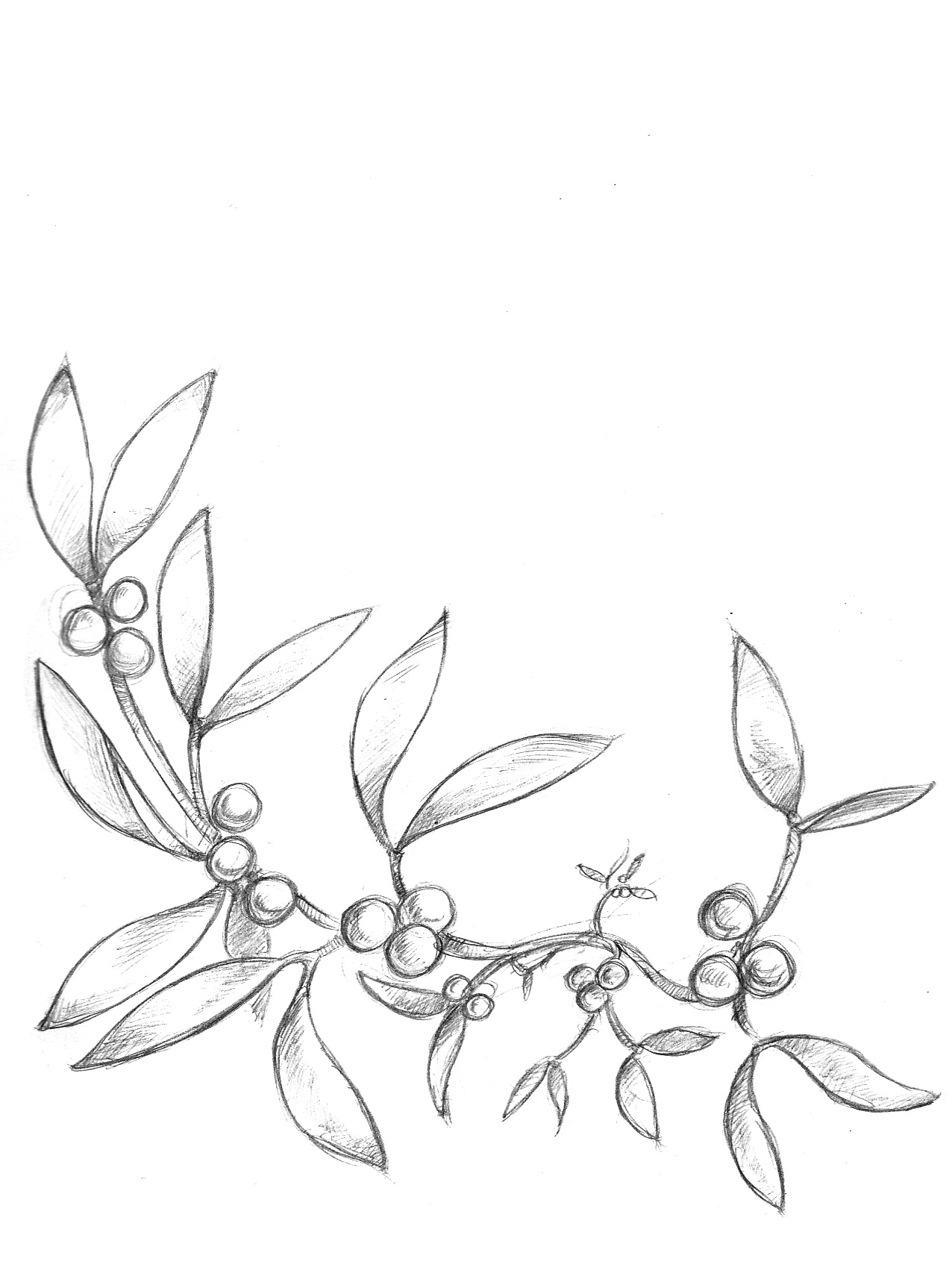
For my family, and that most mysterious woman, the ever radiant, ever-changing Mother Nature, into whose arms we must always surrender.
This edition published in the UK and USA 2015 by
Watkins, an imprint of Watkins Media Limited
19 Cecil Court, London WC2N 4EZ
Text Copyright Danu Forest 2015
Illustrations Dan Goodfellow 2015
Illustrations by Dan Goodfellow
Danu Forest has asserted her right under the Copyright, Designs and Patents Act 1988 to be identified as the author of this work.
All rights reserved.
No part of this book may be reproduced or utilized in any form or by any means, electronic or mechanical, without prior permission in writing from the Publishers.
ISBN: 978-1-78028-862-8
www.watkinspublishing.com
Publishers note: The information in this book is not intended as a substitute for professional medical advice and treatment. If you are pregnant or breastfeeding or have any special dietary requirements or medical conditions, it is recommended that you consult a medical professional before following any of the information or recipes contained in this book. Watkins Media Limited, or any other persons who have been involved in working on this publication, cannot accept responsibility for any errors or omissions, inadvertent or not, that may be found in the recipes or text, nor for any problems that may arise as a result of preparing one of these recipes or following the advice contained in this work.
When working in the natural world, using the ceremonies and ideas in this book, remember to plan ahead and be safe. Follow any signs and local bylaws. Be considerate of plants, animals and other people, and always take your litter home.
Contents
About the author
Danu Forest has practised Celtic witchcraft, Druidry and Celtic shamanism for more than 25 years, and is a respected wisewoman and spiritual teacher. Born with the second sight, she is an experienced seer, or Awenydd, and has helped others to walk the green road, developing and healing their relationship with the spirits of nature and their ancestors for many years. She is a Druid-grade member of OBOD (the Order of Bards Ovates and Druids) and an Ard banDrui (Arch Druidess) of the Druid clan of Dana. She leads a Druid grove in Glastonbury in the UK, and has held public seasonal celebrations for over a decade. Danu is the author of several books on Celtic spirituality. For more information on her work and courses, visit www.danuforest.co.uk.
Introduction
In astronomical terms, the Winter Solstice is the single moment when the sun reaches its southernmost point in the sky(or its northernmost point if you are in the southern hemisphere). Solstice means sun stands still, and for three days at this time the sun appears to rise and set in the same southeasterly position on the horizon, before beginning its gradual incline north once more. Its a spiritual event as much as an astronomical one, heralding the rebirth of the year, as the day on which the Winter Solstice occurs is the shortest of the year, and the night the longest. From now on the sun will gradually arc higher and higher in the sky until it comes to another standstill at the Summer Solstice, on the longest day, when it rises in the northeast. In the southern hemisphere these same solar arcs produce the reverse effect, creating the Summer Solstice in the south, when the north experiences winter, and vice versa. In the northern hemisphere, the Winter Solstice takes place on a day between 2023 December; in the southern hemisphere it falls between 2023 June. However, the suggestions for celebration that this book contains can be carried out any time between the middle and the end of December (or June), as the whole of this period is considered to be the magical season of the Winter Solstice.
Celtic spirituality
Iron Age Celtic culture spanned much of northern Europe and the Atlantic coast, and was highly sophisticated for its time. Long-distance trade routes allowed the exchange of ideas, helped by a common language and shared values and spiritual outlook. The Celts relationship with nature and their environment was all-encompassing; they understood that their very lives were dependent upon nature, its seasons and its patterns. The heavens above, their agricultural life below, and the wilderness that surrounded them were all infused with spiritual significance. In the Celtic worldview, the gods were immanent in nature; they were present in tree and rock, wind and rain, river and soil, sun and moon, together with a whole host of spirits and the ever-guiding ancestors.
The Druids, the Celts religious caste, were fabled for their extensive knowledge of nature, philosophy and the sciences, which included detailed starlore. This mastery allowed them to mark the passage of time and seasonal shifts with a startling accuracy that was beyond even the astronomical capabilities of the Roman Empire at the time. The wonderful Celtic calendar found in Coligny, France, in 1897 demonstrates the Druids significant mathematical and astronomical knowledge, and is based on the moons 19-year cycle an astounding feat for the time. Each of the months recorded in the Coligny calendar runs from full moon to full moon, charting the fall and rise and fall again of the lunar rhythm. This method of tracking time placed importance upon the inner life, on the emotional and the spiritual, as well as on the ebb and flow of the tides both of the sea and of womens fertility balancing the solar pattern of the seasons to create a rich and deeply soulful way for the Celts to relate to the world and to themselves. Its clear the stars and seasons were observed not only for practical reasons, but also for their spiritual lessons: a pattern of increase, then decay, followed by rebirth and renewal.
Celtic culture waned in the centuries following the expansion of the Roman Empire, but lingered on in what is commonly called the Celtic fringe notably Brittany, Cornwall, Wales, Scotland, the Isle of Man and Ireland. When Christianity came, many Celtic gods were forgotten or turned into saints or faery figures remembered only in folklore, yet traditions that celebrated the turn of the seasons with ceremony and magic have spanned the millennia.
The Wheel of the Year
The turning of nature through the deep rest and renewal of winter, the bursting forth of green shoots in spring, the fiery exuberance of summer and the wholesome harvest of autumn (fall) is an endless cycle of growth and completion that can be mirrored in our own lives spiritually, psychologically and practically. Every one of the eight special seasonal festivals listed below has a history of observance going back to the very earliest times, surviving until the modern era in various forms across the Celtic fringe. In the last few decades these ancient celebrations have seen a passionate revival, as many people feel the call to relate spiritually to their environment once again and seek to rediscover their heritage. Woven together, these festivals make a consistent whole: the Wheel of the Year. This cycle of conscious celebration helps us, year on year, to align with natures rhythms with feelings of wonder and insight.

